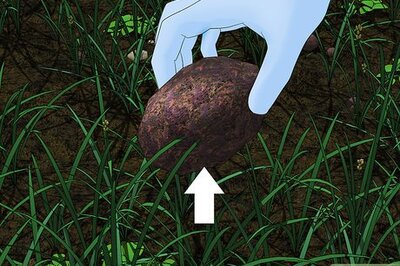
views
Washington: Remember when 30,000 kinds of plants and animals sounded like a lot? That was three years ago.
When the Encyclopedia of Life released its first online version in February 2008, it offered 30,000 pages on individual species. Version 2, released this week, features some 700,000 species pages and more than 600,000 still images and videos on more than one-third of all living things known to science.
This version runs the gamut from aardvark (the ant-eating creature that alphabetically comes first in the popular English-language psyche) to zono (a brightly colored fish found in Madagascar) and beyond.
"We faced the challenge that, the more information you gather, the more difficult it could become to use," Erick Mata, the encyclopedia's executive director, said by telephone.
The work's users, Mata said, "are counting on us to bring it all together. We are asking for a platform that everybody can use and make it possible to put life into context." The site's home page, eol.org, shows a changing six-picture billboard of species -- a typical assortment includes a flower, a bird, a worm, a fish, a tree and a shrub -- that can be clicked for more information.
For queries about specific species, typing the species' name in a search box turns up results. A search for something more amorphous, like baby animals, can produce results with the words "baby," "cub," "kitten" or "pup."
"BEAUTIFUL SEAMONSTERS"
The interactive site offers scientists and other "members" of the Encyclopedia of Life community the ability to create collections of pages on themes they choose.
For example, the collection of "beautiful seamonsters" features the pygmy seahorse, the giant green anemone and the bearded fireworm. All are pictured on the collection's page. For each species identified by humans, the updated Encyclopedia of Life aims to build one infinitely expandable webpage for each creature or plant, with text, pictures, video, sound and graphics.
It is meant to be interactive so that any user -- from a student doing a school report to a professional biologist investigating a particular animal -- can find useful information in English, Spanish and Arabic.
More languages will be possible in the future. Two partners in the project, CONABIO in Mexico and INBio in Costa Rica, provided Spanish-language content; the Library of Alexandria in Egypt provided Arabic content.
The global effort, administered from the Smithsonian Institution in Washington, still has far to go: it aspires to 1.9 million webpages, one of each known species on the planet. And there are probably far more animals and plants than those in the world; scientists writing in the online journal PLoS Biology in August estimated there are just under 9 million species.

















Comments
0 comment